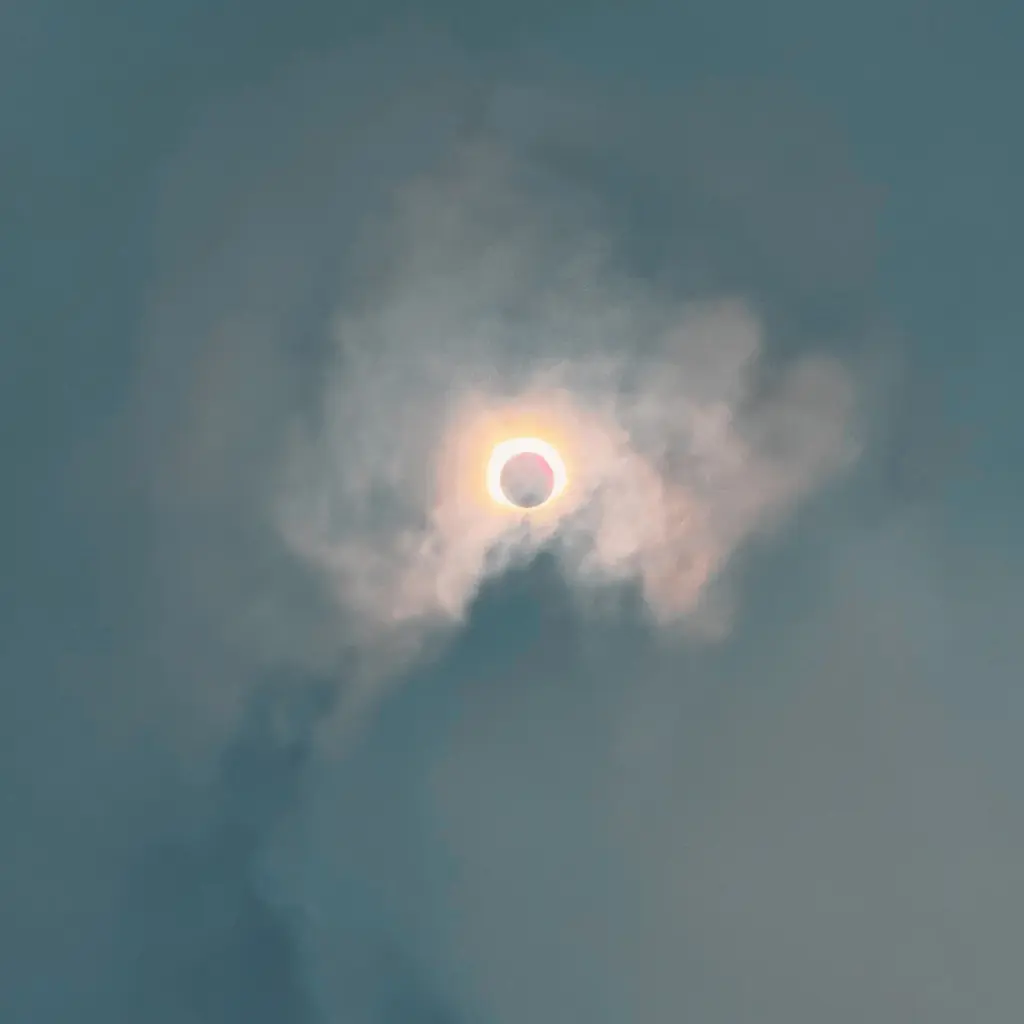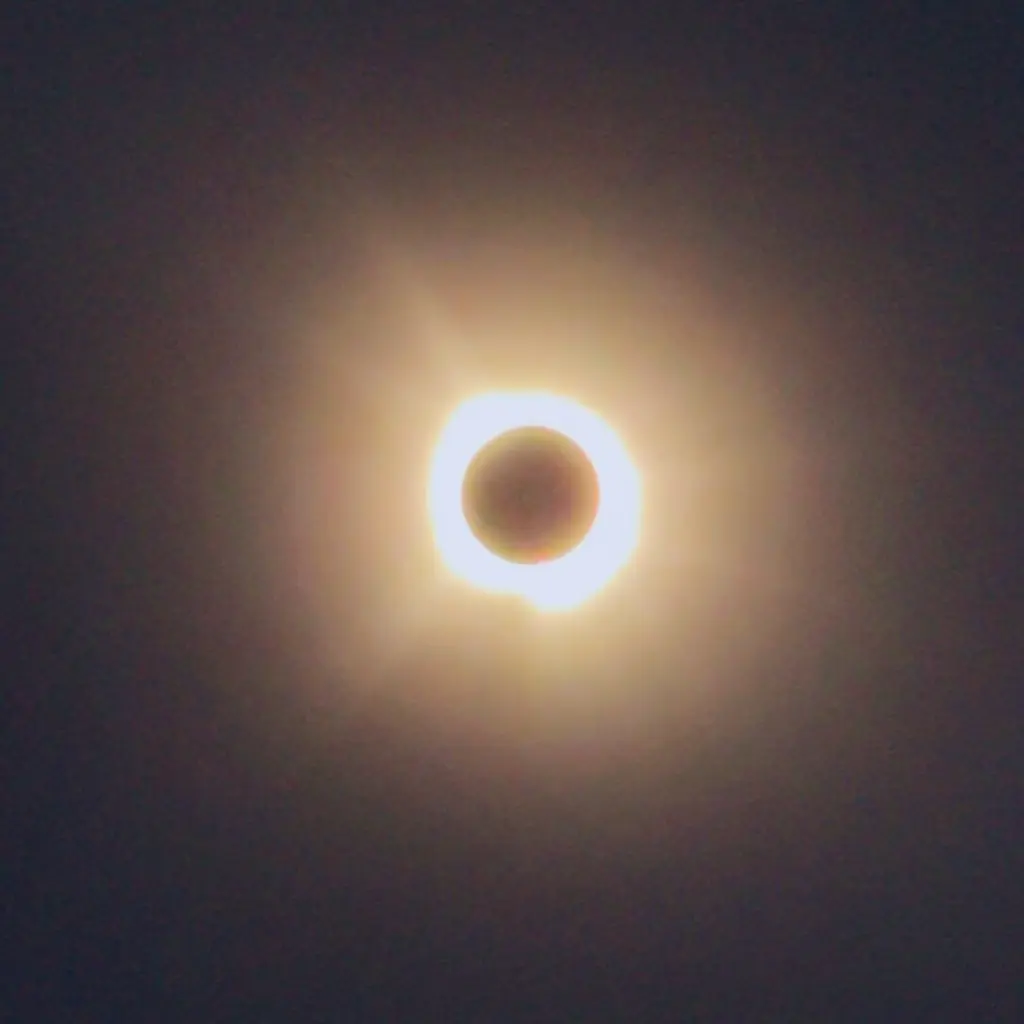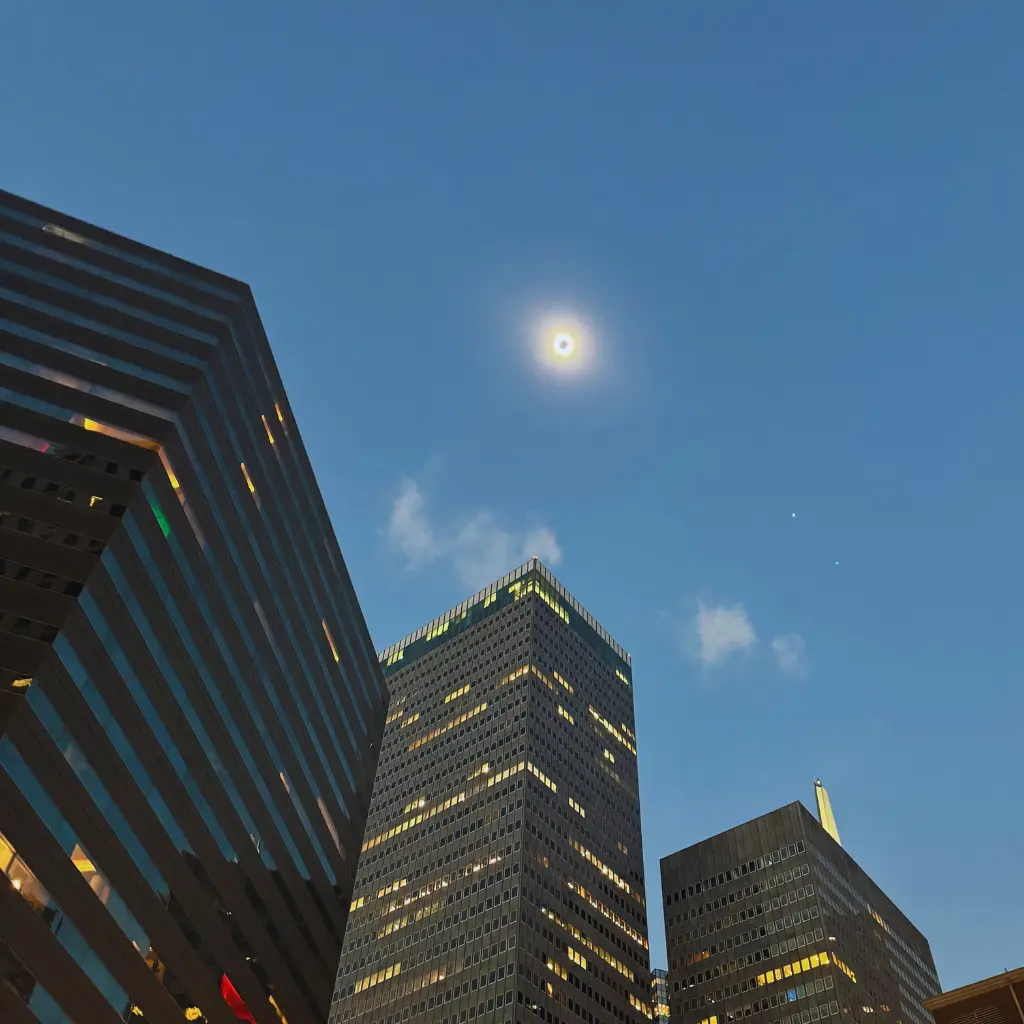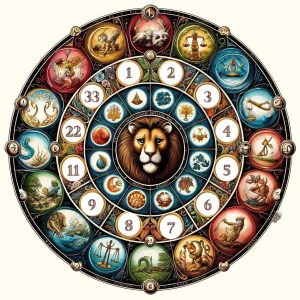- Introduction: Witnessing the Solar Eclipse April 8th 2024
- The Magic of Eclipses: Understanding the Phenomenon
- Phases of the Eclipse: A Timeline of Today’s Event
- Embracing the Shadow: The Path of Totality
- The Prime Viewing Locations
- Viewing Recommendations:
- How to Safely Watch the Eclipse
- The Science Behind the Eclipse: Why It Happens
- Viewing Parties and Events
- Conclusion: A Moment of Cosmic Reflection
- FAQs: Your Guide to the April 8, 2024, Solar Eclipse
- 1. What is a solar eclipse?
- 2. What are the types of solar eclipses?
- 3. How can I safely watch a solar eclipse?
- 4. Why is the path of totality important?
- 5. How long does a solar eclipse last?
- 6. Can solar eclipses be predicted?
- 7. What is the “diamond ring” effect?
- 8. Can solar eclipses affect animals?
- 9. Will there be another solar eclipse soon after this one?
- 10. How can I photograph a solar eclipse?
- FAQs: Your Guide to the April 8, 2024, Solar Eclipse
Introduction: Witnessing the Solar Eclipse April 8th 2024
Today (04/08/2024) marks an extraordinary celestial event that captures the imaginations of sky-watchers and astronomers alike—a solar eclipse. This celestial phenomenon, where the moon passes between the Earth and the sun, momentarily casting a shadow over our planet, offers a unique spectacle that has fascinated humanity throughout the ages. In this article, we’ll dive deep into understanding today’s solar eclipse, covering its phases, viewing tips, and the science behind this awe-inspiring event. Whether you’re an avid astronomer or a curious observer, this guide aims to enhance your viewing experience and deepen your appreciation for the wonders of our universe.
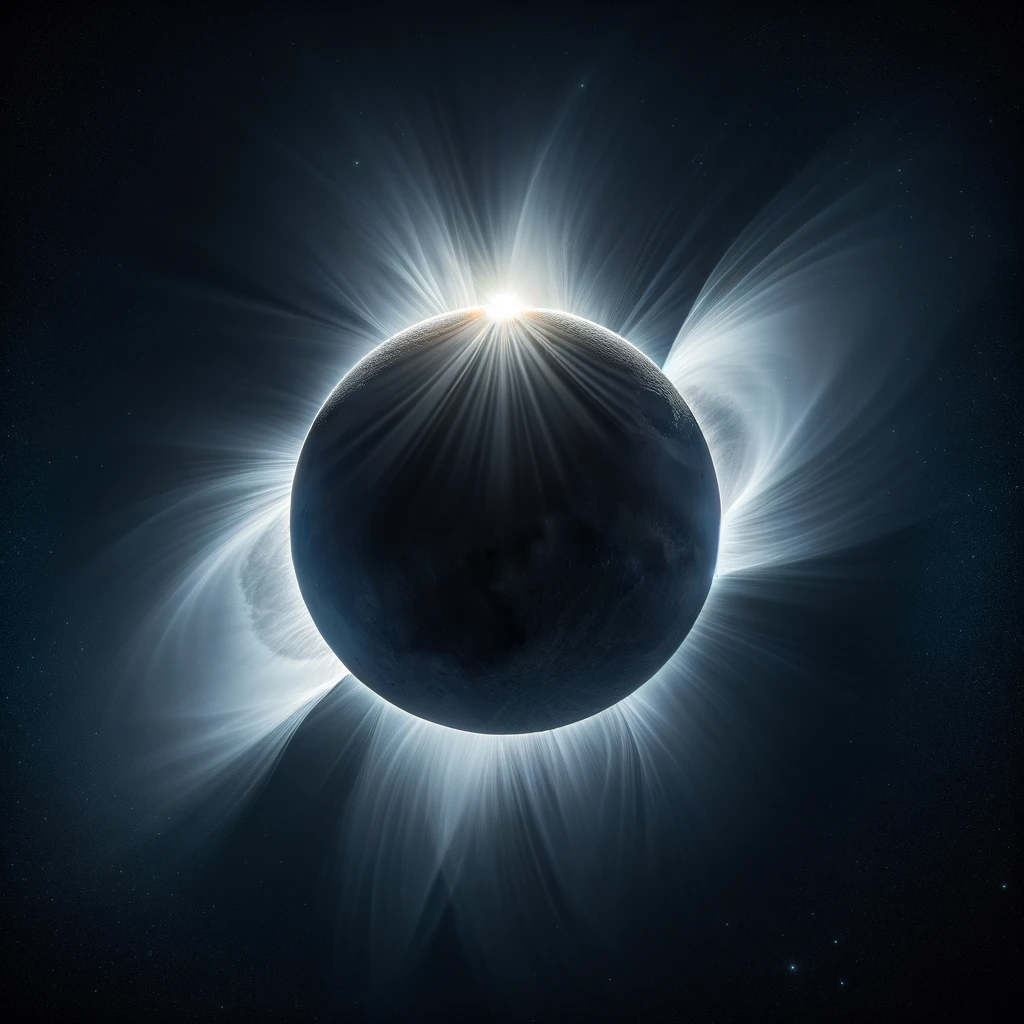
The Magic of Eclipses: Understanding the Phenomenon
Solar eclipses occur when the moon’s orbit aligns in such a way that it blocks the sun’s light from reaching the Earth. Depending on the moon’s distance from the Earth and its alignment, eclipses can be partial, annular, or total. Today’s eclipse is particularly special due to its [specify type: total, annular, or partial], offering a rare opportunity for observers in [specify regions] to witness this majestic event firsthand.
Phases of the Eclipse: A Timeline of Today’s Event
The eclipse will unfold in several phases, each presenting a unique aspect of this cosmic dance:
- First Contact (P1): The moon begins to make its presence known as it starts to cover the sun, marking the beginning of the eclipse.
- Second Contact (U1): For a total or annular eclipse, this phase signals the start of the total or annular coverage. The landscape around you may begin to change, with shadows becoming sharper and the temperature slightly dropping.
- Totality or Maximum Eclipse: The apex of the event, where the sun is either completely covered by the moon, creating a brief period of daytime darkness, or at its maximum coverage for partial and annular eclipses.
- Third Contact (U4): The moment when the sun begins to re-emerge, signaling the end of the total or annular phase.
- Fourth Contact (P4): The eclipse concludes as the moon moves away, leaving the sun fully visible once again.
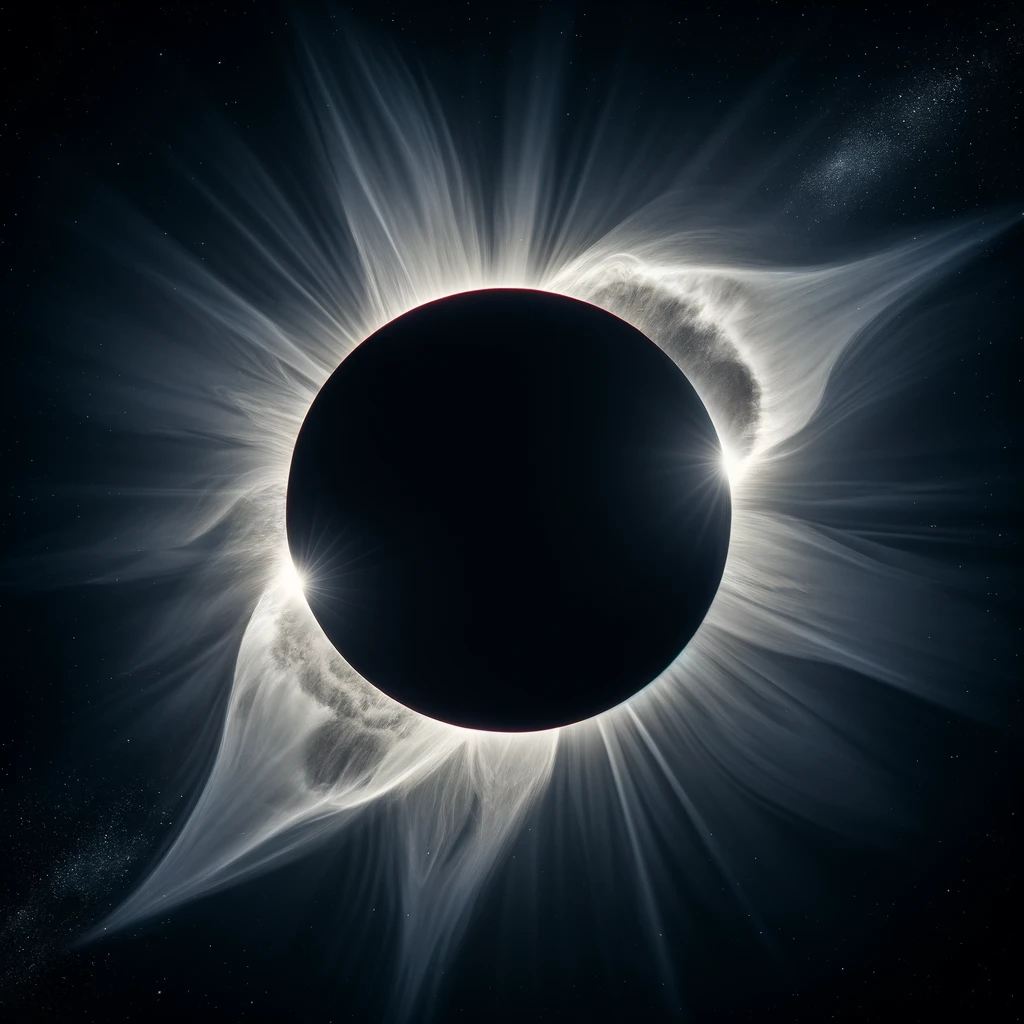
Embracing the Shadow: The Path of Totality
One of the most awe-inspiring aspects of a total solar eclipse is the path of totality—an exclusive track across the Earth’s surface where observers can witness the moon completely covering the sun. Within this narrow path, daylight gives way to a surreal twilight, stars may become visible, and the sun’s delicate corona encircles the dark silhouette of the moon. Today’s eclipse presents a unique opportunity for certain regions to experience this extraordinary event. Here’s a closer look at the places that will be enveloped in the shadow of totality, transforming day into night for a brief, magical moment.
The Prime Viewing Locations
Based on the information gathered from various sources, the path of totality for the April 8, 2024, solar eclipse will traverse through a variety of regions, offering unique viewing experiences across North America, with the phenomenon also partially visible in other parts of the world including Canada and parts of Central and South America. Here is an updated and detailed overview of key locations along the path of totality:
1. Mazatlán, Sinaloa, Mexico
The celestial spectacle will start over the Pacific Ocean, making its first landfall in Mexico. Mazatlán, located on Mexico’s Pacific coast, will be one of the first cities to witness the eclipse’s totality phase at approximately 11:07 AM PDT. Observers here can expect a duration of totality lasting around 4 minutes, offering a breathtaking view of the sun’s corona and the opportunity to witness the rare “diamond ring” effect as the sun begins to reappear (National Eclipse).
2. Dallas, Texas, USA
As the shadow moves across the Earth, Dallas, Texas, will experience the eclipse with totality occurring around 1:40 PM CDT. The city is set for an immersive darkening of the skies, lasting approximately 3 minutes and 51 seconds. This dramatic change will be accompanied by a noticeable drop in temperature and potentially the visibility of planets and brighter stars (National Eclipse).
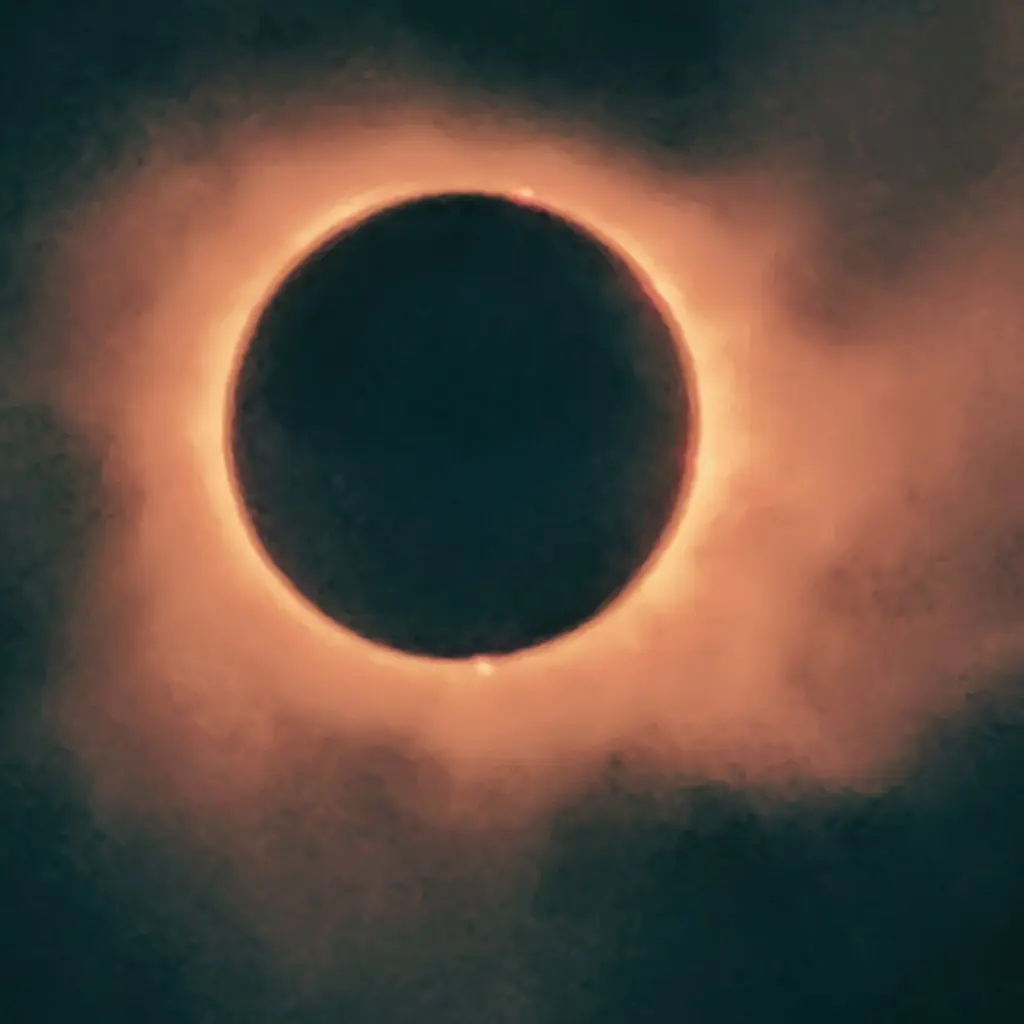
3. Carbondale, Illinois, USA
Further along the path, Carbondale in Illinois offers an exceptional location for eclipse chasers. The total eclipse will be visible around 1:59 PM CDT, with the totality phase lasting about 4 minutes. This location is notably a repeat host for the path of totality, having experienced a similar event back in 2017, making it a prime spot for observers (National Eclipse).
4. Indianapolis, Indiana, USA
The eclipse will progress to Indianapolis, providing a notable viewing experience with totality anticipated to start at approximately 3:06 PM EDT and lasting for around 3 minutes and 48 seconds. The area’s flat landscapes offer expansive views, making it an ideal location for observing the eclipse against a dramatic backdrop (National Eclipse).
5. Akron, Ohio, USA
The final major city in the U.S. to witness totality will be Akron, Ohio. This location will see the eclipse at around 3:14 PM EDT, with the event lasting approximately 3 minutes and 30 seconds. Observers in this area will have the chance to experience the concluding act of the eclipse as it makes its way across North America before heading out over the Atlantic (National Eclipse).
Additional Observations Outside the USA:
- Canada: The path of totality will pass over parts of Southern and Eastern Ontario, Southern Quebec, Central New Brunswick, Western Prince Edward Island, Northern Cape Breton Island, Nova Scotia, and Central Newfoundland before disappearing off the eastern Atlantic coast of Newfoundland. Canadian cities like Leamington, Fort Erie, Hamilton, Niagara Falls, Kingston, Prince Edward County, Cornwall, Montreal, Sherbrooke, Saint-Georges, Lac-Mégantic, Fredericton, Woodstock, Miramichi, Tignish, Summerside, Gander, and Grand Falls-Windsor are within or near the path of totality. Some cities, such as Hamilton and Montreal, lie on the edge of the path, offering unique perspectives on the event (Wikipedia).
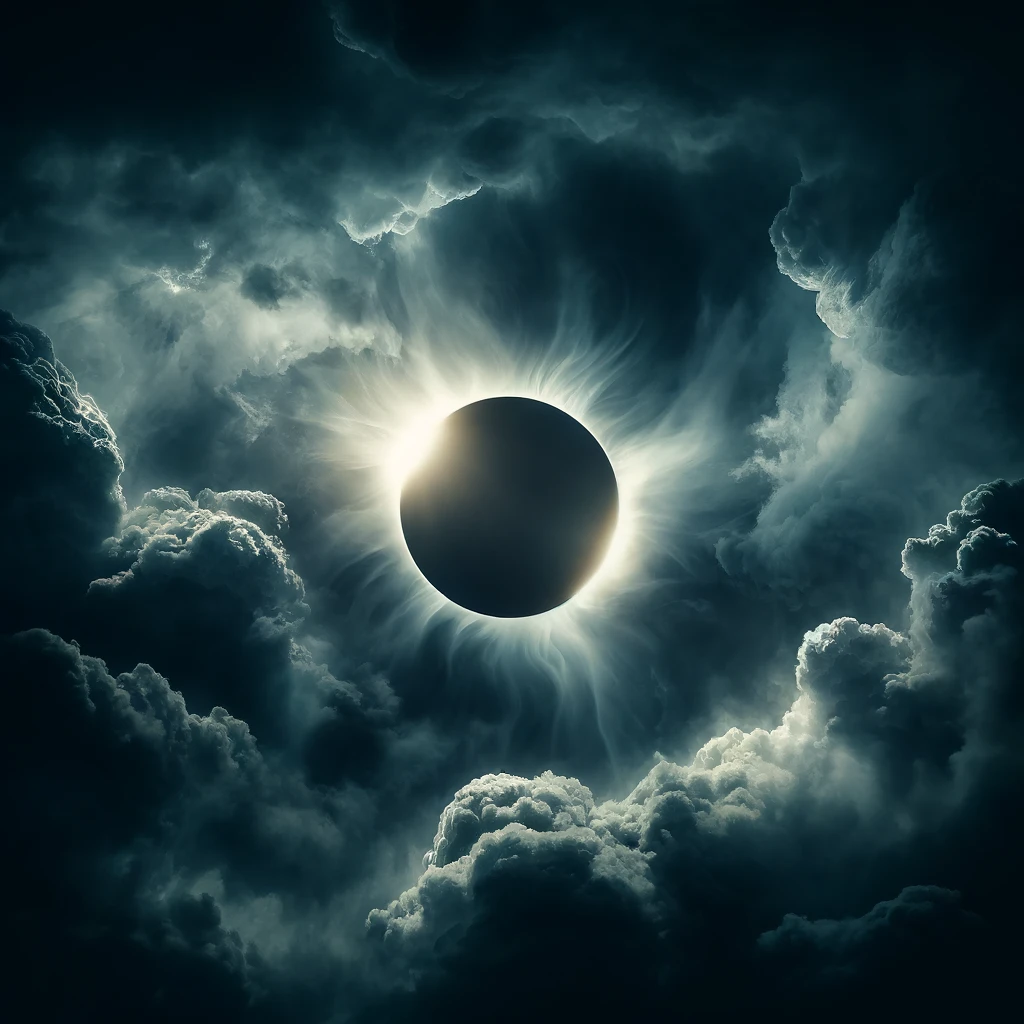
Viewing Recommendations:
For those located in or traveling to these areas, witnessing the total solar eclipse is a unique and mesmerizing experience. It’s advisable to arrive early to secure a good viewing spot, especially in popular locations, and prepare for varying weather conditions. Observers are reminded to use proper solar viewing glasses to safely enjoy the event.
This detailed overview captures the broad trajectory of the 2024 solar eclipse across North America, highlighting key locations within the path of totality. Each provides a unique opportunity to witness one of nature’s most awe-inspiring phenomena, promising an unforgettable experience for all who participate.
Maximizing Your Eclipse Experience
For those located in or traveling to these areas, the experience of totality is unparalleled. Here are a few tips to make the most of this event:
- Arrive Early: Locations along the path of totality are expected to attract large crowds. Arriving early will help secure a good viewing spot.
- Prepare for Weather: Check the forecast and prepare accordingly. Clear skies are ideal, but weather can be unpredictable.
- Capture the Moment: Whether it’s through photography or simply soaking in the experience, remember to enjoy the eclipse responsibly. Use proper solar filters for any cameras or binoculars.
Witnessing a total solar eclipse is a rare and moving experience, offering a brief encounter with the sublime beauty of our cosmos. For those in the path of totality, today’s event promises to be an unforgettable spectacle, a moment of unity with the universe that reminds us of the wonders beyond our world.
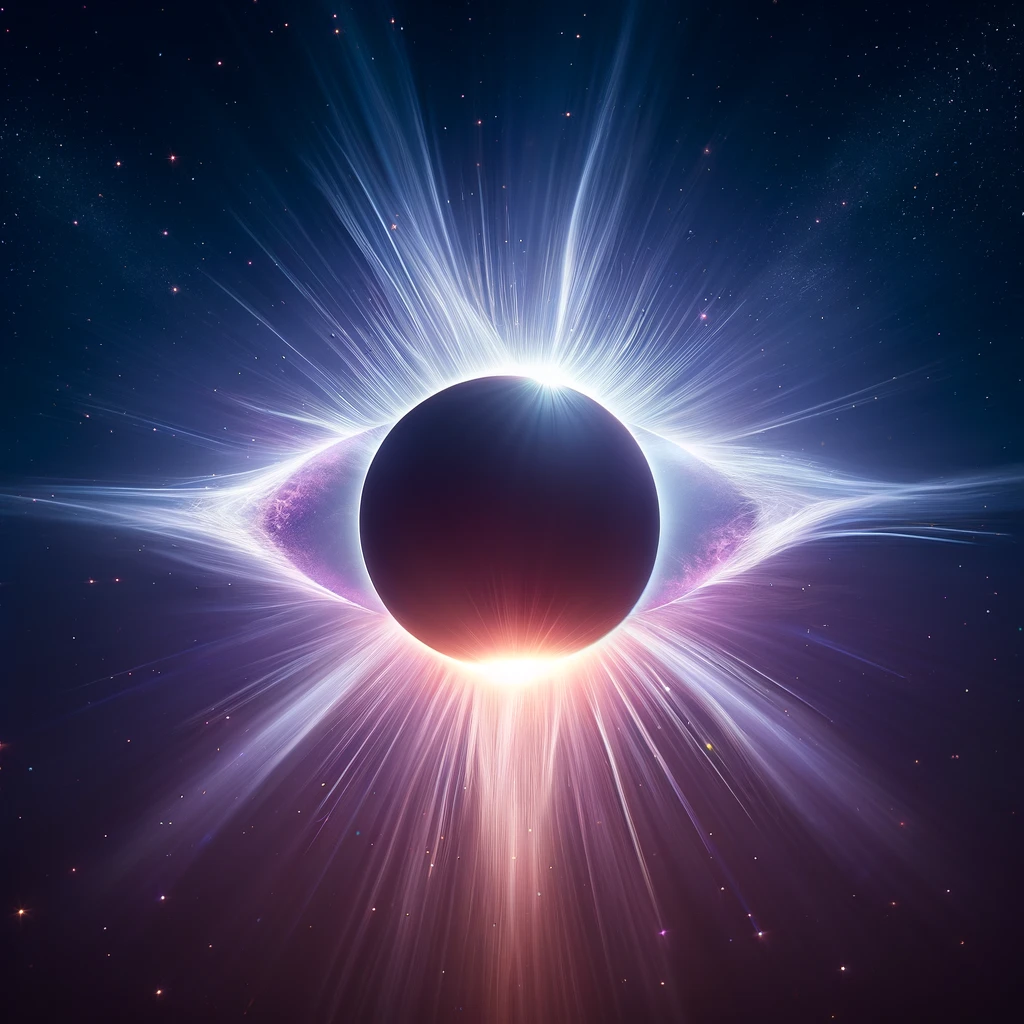
How to Safely Watch the Eclipse
Viewing a solar eclipse requires precaution to avoid eye damage. Here are tips for a safe viewing experience:
- Use Eclipse Glasses: Standard sunglasses are not safe for viewing the eclipse. Special eclipse glasses or solar viewers are necessary to protect your eyes.
- Pinhole Projectors: This DIY method allows you to project the image of the sun onto a surface, watching the eclipse indirectly.
- Telescopes with Solar Filters: If you have access to a telescope, ensure it is equipped with a solar filter for safe viewing.
The Science Behind the Eclipse: Why It Happens
Solar eclipses offer more than just a spectacular view; they are a playground for scientists to study the sun’s corona, the outer atmosphere which is usually obscured by the bright light of the sun itself. These events have historically contributed to significant scientific discoveries, including the validation of Einstein’s theory of general relativity.
Viewing Parties and Events
Across the regions in the path of the eclipse, numerous viewing parties and events have been organized. These gatherings offer communal viewing equipment, expert talks, and a shared experience that enhances the magic of the eclipse. Check local listings and astronomy clubs for events near you to join fellow enthusiasts in witnessing this spectacular event.
As you set your sights skyward today, remember that you’re participating in a tradition as old as humanity itself—looking up in wonder at the movements of the heavens. Enjoy the eclipse and may your curiosity about our universe continue to grow.
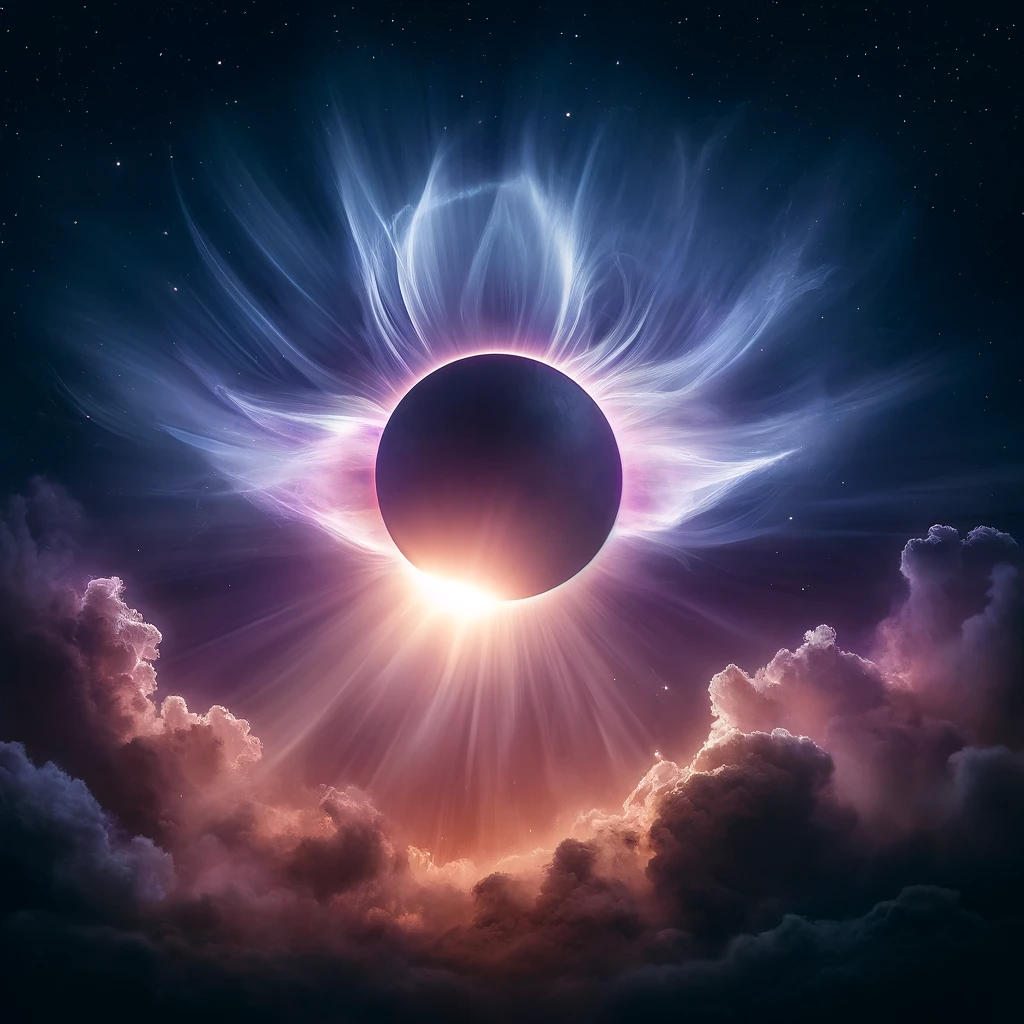
Conclusion: A Moment of Cosmic Reflection
Today’s solar eclipse is not just an astronomical event; it’s a reminder of the grandeur of our universe and our place within it. It encourages us to look up and beyond, to question, learn, and marvel at the wonders above. So, as you prepare to witness this celestial phenomenon, remember the rare beauty and scientific marvel it represents—a fleeting moment where day turns to night and the mysteries of the cosmos are laid bare for us to behold.
FAQs: Your Guide to the April 8, 2024, Solar Eclipse
1. What is a solar eclipse?
- A solar eclipse occurs when the Moon passes between the Earth and the Sun, blocking all or part of the Sun’s light from reaching Earth. This can only happen during a new moon, when the Sun and the Moon are in conjunction as seen from Earth in an alignment known as syzygy.
2. What are the types of solar eclipses?
- Solar eclipses are classified into three main types: total, partial, and annular. During a total eclipse, the Moon completely covers the Sun. In a partial eclipse, only part of the Sun is obscured. An annular eclipse happens when the Moon is too far from Earth to completely cover the Sun, leaving a “ring of fire” visible.
3. How can I safely watch a solar eclipse?
- Never look directly at the Sun without proper eye protection, except during the brief total phase of a solar eclipse. Use solar viewing glasses or solar filters for telescopes and binoculars. Indirect viewing methods, like pinhole projectors, are also safe and easy to use.
4. Why is the path of totality important?
- The path of totality is the narrow path across the Earth’s surface where viewers can experience a total solar eclipse. It’s the only place where one can witness the complete darkening of the sky, see the Sun’s corona, and observe stars and planets become visible in what seems like daytime.
5. How long does a solar eclipse last?
The duration of a solar eclipse (including partial phases) can last for several hours. However, the total or annular phase of an eclipse, when the Moon completely covers the Sun, usually lasts for just a few minutes. The exact duration depends on the geometry of the Sun, Moon, and Earth during the event.
6. Can solar eclipses be predicted?
Yes, solar eclipses can be predicted with great accuracy. Astronomers use the Saros cycle, an 18-year period after which eclipses repeat, to calculate future eclipses. Modern methods involve precise orbital calculations of the Earth and Moon.
7. What is the “diamond ring” effect?
The diamond ring effect is a phenomenon observed just before and just after totality during a total solar eclipse. As the moon moves to cover or uncover the Sun, a single point of bright light becomes visible against the ring of the Sun’s corona, resembling a diamond ring.
8. Can solar eclipses affect animals?
Yes, solar eclipses can affect animal behavior. Birds may go silent, and some animals might behave as if night is falling, displaying behaviors typical of dusk or pre-dawn.
9. Will there be another solar eclipse soon after this one?
Solar and lunar eclipses typically occur in pairs or triplets, with each event separated by about two weeks. The next solar eclipse might be partial or annular, depending on the alignment. For exact dates and types of upcoming eclipses, consult astronomical forecasts.
10. How can I photograph a solar eclipse?
Photographing a solar eclipse requires a camera with manual settings and a solar filter to protect the camera’s sensor. Use a tripod for stability, and practice photographing the moon to get a sense of the required settings. During totality, filters can be removed to capture the corona, but they must be replaced as soon as the bright sunlight begins to return.
Check out these other great images of the Solar Eclipse from today April 8th, 2024:
